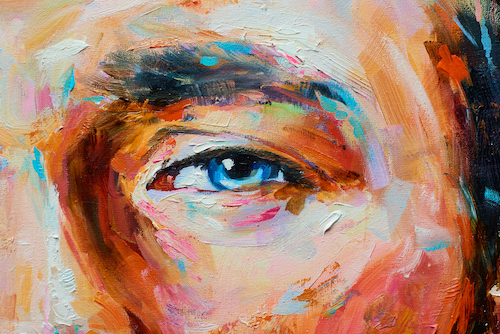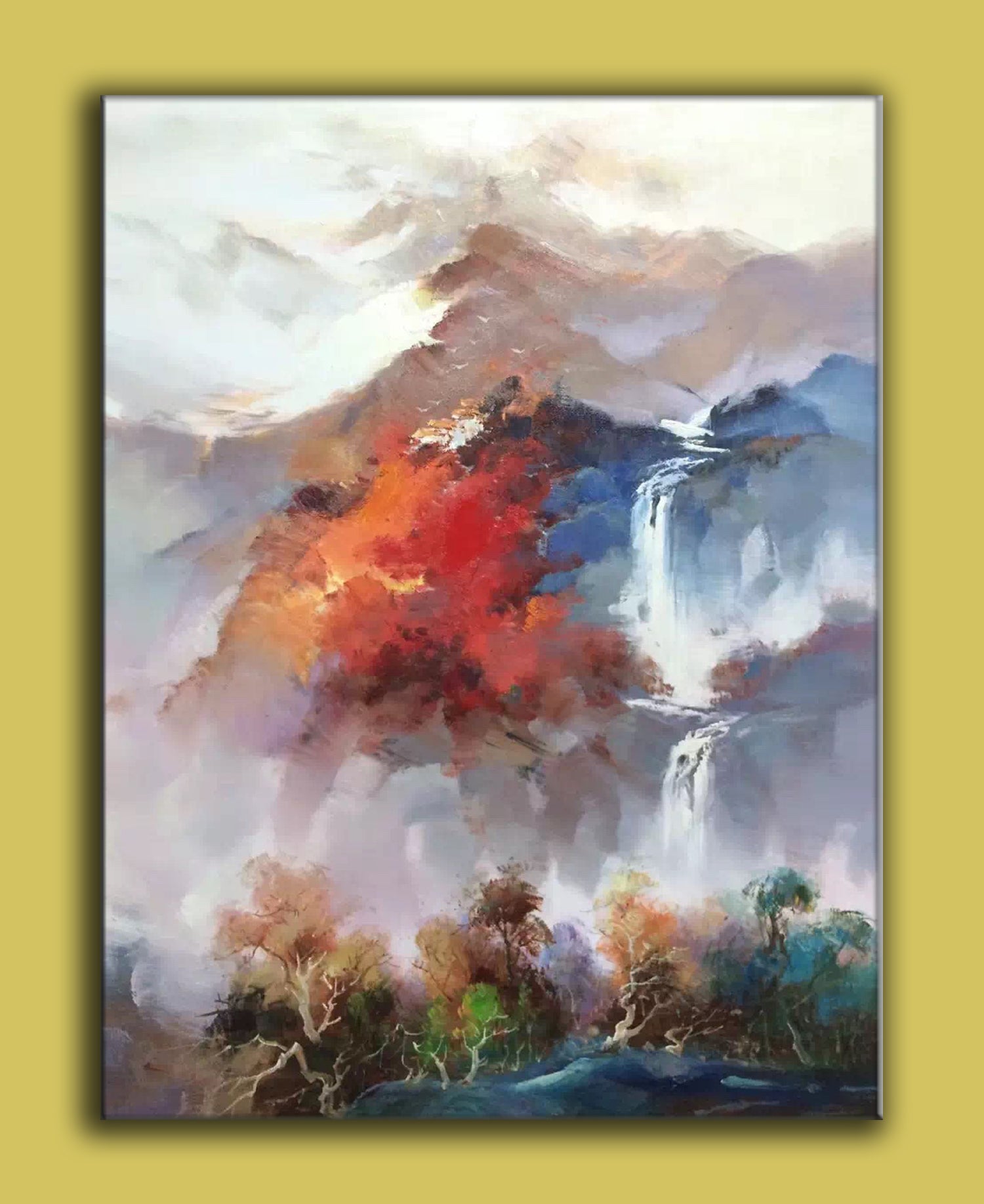Artist-Made Creations: Oil Paintings for Sale by Artists
Artist-Made Creations: Oil Paintings for Sale by Artists
Blog Article
Discovering Everything About Oil Paintings: An Overview to Understanding Their Appeal and Worth
Oil paintings have actually mesmerized target markets for centuries, using a glimpse right into the imaginative proficiency of various periods. Their rich background is intertwined with innovative methods and extensive emotional expression. Recognizing the products and methods behind these art work can boost gratitude. Additionally, the market for oil paintings provides possibilities for enthusiasts and financiers alike. As one explores this interesting world, the question arises: what makes an oil paint genuinely beneficial?
The History of Oil Paint: A Journey With Time
Oil paint has origins that date back to ancient times, it really grew during the Renaissance, when musicians found its versatility and abundant color potential. Early examples can be mapped to the 7th century, with methods advancing significantly throughout societies. The medium ended up being famous in Northern Europe in the 15th century, especially through the works of musicians like Jan van Eyck, that originated its use for comprehensive realistic look and vivid tones. This period marked a departure from tempera paints, enabling for higher deepness and appearance. As oil paint spread, it affected countless musicians, bring about masterpieces by prominent figures such as Leonardo da Vinci and Rembrandt. The tool's legacy continues, shaping the art world well right into contemporary times.
Comprehending Oil Paints: Materials and Techniques
As artists explore the globe of oil paints, they experience a diverse range of materials and methods that define this medium. The primary elements of oil paint consist of pigments, which offer color, and drying oils, such as linseed, that bind the pigments and facilitate application. Numerous ingredients can change the paint's texture and drying time, improving convenience. Strategies like glazing, where transparent layers are accumulated, and impasto, which entails applying thick paint, permit different visual impacts. Additionally, making use of brushes, palette blades, and even fingers can produce one-of-a-kind textures and finishes. Comprehending these methods and products enables musicians to completely share their imagination and achieve the desired effect in their art work.
The Duty of Shade in Oil Paintings
Color plays a critical function in oil paints, affecting both aesthetic allure and psychological vibration. Comprehending color theory basics, including the connections in between hues, can improve an artist's capacity to communicate mood and atmosphere. Furthermore, mastering color mixing techniques permits higher depth and splendor in a painting's scheme.

Shade Concept Essential
Comprehending shade concept is crucial for artists working with oil paints, as it develops the foundation for creating aesthetically engaging and harmonious compositions. Shade theory encompasses the research study of exactly how shades interact, the color wheel, and the relationships between main, additional, and tertiary colors. Artists utilize corresponding colors to improve contrasts and develop focal factors, while comparable colors promote unity and cohesiveness within a piece. Furthermore, the concepts of great and warm shades influence the assumption of deepness and room in a painting. Understanding these concepts enables musicians to control color successfully, leading the visitor's eye and communicating their desired message. Proficiency of color concept ultimately enhances a musician's capacity to communicate feelings and concepts through their work.
Psychological Impact of Color
The psychological effect of shade in oil paintings plays an essential role in exactly how viewers attach and perceive with artwork. Colors stimulate details sensations and state of minds, affecting the visitor's emotional state. Warm shades like oranges and reds can develop a feeling of heat and power, while amazing tones such as blues and environment-friendlies usually stimulate peace or self-contemplation. Artists strategically pick color palettes to enhance narrative elements, guiding the audience's emotional trip. The saturation and comparison of shades additionally magnify these effects, drawing attention and developing focus. Inevitably, the interaction of colors in oil paintings not only enhances their visual allure yet likewise functions as a powerful medium for emotional expression, enhancing the customer's experience and analysis.
Shade Combining Techniques
While several facets of oil paint add to the overall composition, understanding shade mixing techniques is essential for attaining wanted impacts and depth. Shade blending can be approached through numerous approaches, consisting of the additive and subtractive processes. Additive blending involves integrating colors of light, while subtractive mixing counts on pigments, where shades blend to develop new shades. Musicians typically use a limited scheme to produce harmonious jobs, comprehending the relationships in between primary, second, and tertiary colors. Techniques such as glazing and scumbling better improve deepness and brightness. By skillfully blending colors, a musician can stimulate emotions, create prime focus, and accomplish a feeling of realistic look, ultimately boosting the paint's emotional and visual influence.
Famous Oil Painters and Their Iconic Works

Famed for their mastery of color and strategy, oil painters have actually created some of the most renowned art work in background. Prominent musicians like Vincent van Gogh captivated audiences with his emotive brushwork in "Starry Evening," while Claude Monet's "Impact, Sunup" prepared for Impressionism. Leonardo da Vinci's "Mona Lisa" remains a long-lasting icon of artistic genius, showcasing his ability in capturing human expression. On the other hand, Rembrandt's "The Night Watch" shows his ingenious use light and darkness. Other notable numbers include Pablo Picasso, who revolutionized modern-day art with his bold testing in works like "Les Demoiselles d'Avignon," and Georgia O'Keeffe, whose dynamic depictions of landscapes and blossoms aided specify American innovation. Each musician's unique style contributed considerably to the oil paint landscape.
Exactly how to Examine the Top Quality of an Oil Paint
Assessing the quality of an oil painting involves a careful assessment of craftsmanship techniques, along with an evaluation of shade and make-up. Observing brushwork, layering, and the application of paint can disclose the musician's ability degree. Furthermore, the interplay of colors and the overall setup of components add substantially to the painting's aesthetic value.
Assessing Craftsmanship Methods
A thorough evaluation of craftsmanship techniques is vital for figuring out the high quality of an oil paint. Evaluators need to initially take a look at the application of paint; thick, textured brushstrokes may recommend an experienced hand, while overly consistent applications might indicate an absence of deepness. oil paintings for sale. The layering technique is additionally crucial; the existence of glazes and differed thickness can boost luminance and complexity. Furthermore, the top quality of the materials utilized, such as the canvas and pigments, plays a considerable duty in sturdiness and overall visual. Attention to information in aspects like edges and shifts in between shades reflects the musician's commitment to their craft. Eventually, these strategies add to the paint's psychological impact and market price, acting as indications of the artist's ability and intent
Evaluating Shade and Composition
While assessing the quality of an oil painting, one should concentrate on the interaction of shade and structure, as these elements are basic to the art work's overall influence. Shade choices can stimulate emotions and develop mood; as a result, the musician's scheme need to be checked out for harmony and contrast. A well-balanced composition directs the audience's eye and produces a sense of unity. Artists commonly use strategies like the rule of thirds or leading lines to enhance visual rate of interest. Furthermore, the usage of light and shadow can add depth, enhancing the three-dimensionality of the painting. Eventually, an effective oil painting weds color and structure, involving the viewer and inviting a deeper gratitude of the artist's vision and technique.
Taking care of and Preserving Oil Paintings
Correct treatment and conservation of oil paints is important for preserving their stability and long life. To shield these art work, it is vital to display them away from straight sunlight, which can cause fading and discoloration. Maintaining a stable environment with controlled temperature and humidity further aids in avoiding damage. Cleaning should be done delicately making use of a soft, completely dry fabric, preventing any kind of harsh chemicals that could harm the paint or varnish. Normal examinations for indicators of wear and tear, such as cracking or flaking, are suggested. When transporting or storing oil paints, appropriate padding and framing are essential to stay clear of physical damage. Ultimately, diligent care adds to the aesthetic charm and worth of oil paints in time.
The Market for Oil Paintings: Gathering and Spending
Recognizing the marketplace dynamics for oil paints is vital for collectors and financiers alike. The worth of these artworks is influenced by numerous elements, consisting of the musician's credibility, historic value, and current patterns. Enthusiasts frequently look for pieces that reverberate directly while considering prospective admiration in value. Auctions and galleries offer as key venues for trading, with rates varying based on need and rarity. Buying oil paintings needs research study into the marketplace, along with an understanding of authenticity and provenance. In addition, emerging artists might use chances for considerable returns, while established names can command high costs. On the whole, a calculated technique to collecting can generate both visual satisfaction and economic rewards.

Often Asked Inquiries
What Are the Environmental Effects of Oil Painting Materials?
The ecological influences of oil paint materials consist of the launch of unstable organic substances (VOCs), hazardous waste generation, and source removal for pigments. These factors contribute to air pollution and eco-friendly degradation, raising concerns among eco mindful musicians and customers.
How Do Various Canvases Influence Oil Paint Outcomes?
Various canvases affect oil painting results substantially. Surface, absorbency, and structure high quality can modify paint application, drying out times, and shade vibrancy. Artists often select certain canvases to accomplish wanted results and boost their artistic expression.
Can Oil Paintings Be Restored if Damaged?
Oil paintings can certainly be brought back if damaged. Expert conservators make use of numerous strategies to fix rips, tidy surfaces, and address staining, making certain that the artwork keeps its original elegance and worth for future generations.
What Are the Indications of an Original Oil Painting?
The indications of an original oil painting click here include noticeable brush strokes, texture variants, and an uneven canvas weave (oil paintings for sale). Furthermore, credibility may be confirmed via provenance, signatures, and the presence of a varnish layer special to oil tools
Exactly How Has Technology Influenced Modern Oil Paint Techniques?
Modern technology has greatly affected modern oil paint strategies by presenting digital tools for planning, improved products for texture and durability, and on-line platforms for sharing and selling art, thus broadening musicians' creative opportunities and target market get to. Oil paint has roots that date back to old times, it truly flourished throughout the Renaissance, when musicians uncovered its flexibility and rich shade capacity. The psychological influence of shade in oil paints plays an essential duty in how visitors attach and regard with art work. While many aspects of oil painting contribute to the total structure, mastering color blending methods is essential for accomplishing preferred impacts and depth. Evaluating the quality of an oil paint entails a cautious analysis of craftsmanship methods, as well as an analysis of color and composition. While assessing the top quality of an oil painting, one have to focus on the interplay of shade and make-up, as these elements are essential to the artwork's general influence.
Report this page